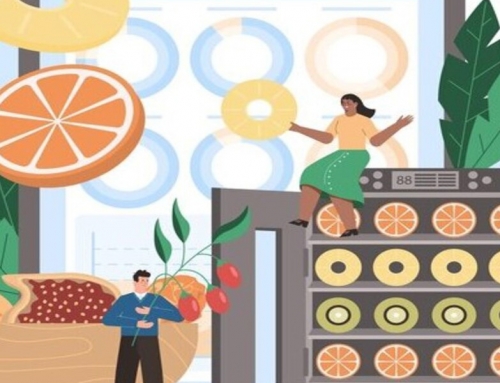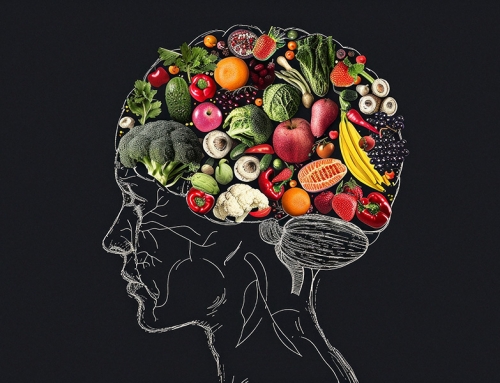Introduction
In order to study the handling, storage, retrieval, and application of information, the multidisciplinary area of informatics incorporates computer science, information science, and other related fields. It entails using technology and tools for data analysis to gather, organise, analyse, and disseminate information across various industries, including healthcare, business, science, and education. The field of informatics is significant since it deals with various information-relat
What is Data Visualization
Data visualization involves presenting data and information using visual elements like charts, graphs, maps, and infographics. Its purpose is to make complex data easier to understand, interpret, and analyze by visually representing it. Data visualization helps uncover patterns, trends, and relationships in the data, making it more accessible and actionable. It enables users to gain insights, make informed decisions, and effectively communicate their findings. By transforming raw data into visual representations, data visualization aids in exploring datasets, identifying correlations, highlighting outliers, and presenting complex concepts in a more intuitive and understandable manner. It utilizes various visual elements and techniques, including charts, graphs, maps, infographics, and dashboards, to represent different types of data. [1]
Data visualization offers several advantages, including[1]
- Enhanced understanding: Visual representations aid in comprehending intricate data and recognizing patterns or trends more easily.
- Streamlined data analysis: Visualizations enable swift exploration and analysis of data, allowing users to promptly identify outliers or anomalies.
- Improved decision-making: Clear insights provided by visualizations support informed decision-making, particularly when dealing with extensive datasets.
- Effective communication: Visual representations of data are engaging and impactful, facilitating the communication of findings to various stakeholders.
Data Visualisation in Healthcare
The healthcare industry now considers data visualization an essential rather than an optional tool. Modern medical organizations must utilize data visualization to stay competitive. According to estimates, the global market for healthcare data analytics is expected to experience a significant growth of 3.5 times in just six years, increasing from $11.5 billion in 2019 to $40.8 billion in 2025. Moreover, most healthcare organizations worldwide have identified data integration as their top technology priority to implement by the end of 2021. [3]
The surge in data analytics and visualization tools can be attributed to various factors, including the most prominent and recent pandemic. The COVID-19 crisis accelerated health technology adoption, significantly increasing the amount of data available in digital formats. Healthcare organizations have been implementing data integration and visualization tools to effectively highlight pertinent information and make sense of the growing data landscape. [3]
How Data Visualization is Used in Healthcare
Healthcare organizations commonly utilize dashboards as a prevalent visualization tool, which brings together multiple interactive reports. These dashboards can be integrated into existing software and data analysis capabilities or incorporated into reporting software customized to meet the organization’s specific requirements. [3]
There are three primary categories of dashboards[3] –
- Operational dashboards: These dashboards present real-time data, providing immediate insights into the current state of operations within the healthcare organization.
- Strategic dashboards: Designed to showcase patterns and trends over a while, strategic dashboards offer a broader perspective on the organization’s performance and aid in long-term decision-making.
- Analytical dashboards: These dashboards offer more advanced analytics, allowing for in-depth analysis and exploration of data to uncover meaningful insights and support complex decision-making processes.
Data Visualization in Nutrition Informatics
Data visualization is a critical component of nutrition informatics as it is vital in presenting complex nutritional data in a visually appealing and easily understandable format. Here are further elaborations on how data visualization is utilized in nutrition informatics:
Dietary Assessment: Data visualization techniques enable the representation of food intake data collected through various methods like food diaries, 24-hour recalls, or food frequency questionnaires. Visualizations aid individuals and healthcare professionals in understanding patterns, identifying nutritional deficiencies or excesses, and making informed decisions about dietary changes. For example, interactive charts and graphs can display nutrient intake over time, highlighting trends and identifying areas of improvement. [4]
Nutrient Analysis: Visualizing nutrient data facilitates a better understanding of the nutrient composition of different foods or meals. It assists in identifying nutrient imbalances or deficiencies in an individual’s diet, supporting the development of personalized nutrition plans. Interactive visualizations, such as comparing nutrient values across different foods, serving sizes, or periods, empower individuals to make informed choices about their dietary habits. [4]
Public Health Surveillance: Data visualization is crucial for public health surveillance systems that monitor the nutritional status of populations. By visualizing data, trends, patterns, and disparities in dietary intake can be identified, aiding policymakers and public health professionals in developing targeted interventions. Visual representations of data can be shared with the public through infographics or interactive dashboards, raising awareness and promoting healthy eating habits on a broader scale. [4]
Menu Planning: Visualizing nutritional information on menus or food labels assists individuals in making informed choices about their food intake. Clear and concise data presentations enable easy comparison and understanding of the nutritional content of different food items. This empowers individuals to make healthier decisions while planning their meals or selecting menu options. [4]
Research and Analysis: Data visualization proves invaluable for researchers and analysts studying nutrition-related topics. It enables the exploration of large datasets, identification of correlations, and visualization of research findings. Interactive visualizations allow researchers to delve deeper into the data, manipulate variables, and gain insights into complex relationships within the nutritional landscape. [5]
Education and Communication: Data visualization is an effective tool for educating individuals about nutrition and promoting health literacy. Simplifying complex information, it enhances accessibility and engagement. Visual representations such as infographics or interactive dashboards can communicate nutritional guidelines, highlight key messages, and raise awareness about the importance of a balanced diet. [5]
Conclusion
Data visualization is a powerful tool that brings significant benefits to industries such as healthcare and nutrition informatics. By presenting complex data in a visually appealing manner, it enhances understanding, streamlines analysis, improves decision-making, and facilitates effective communication. The integration of dashboards and interactive visualizations empowers organizations to gain real-time insights, identify patterns, and make informed choices. In healthcare, data visualization aids in optimizing operations and supporting long-term strategies, while in nutrition informatics, it enables dietary assessment, nutrient analysis, public health surveillance, and education. Overall, data visualization plays a vital role in driving positive outcomes and promoting healthier practices.
References
- Joshi, A., Gaba, A., Thakur, S., & Grover, A. (2021). Need and Importance of Nutrition Informatics in India: A Perspective. Nutrients, 13(6), 1836. //doi.org/10.3390/nu13061836
- Bingjie Zhou, Shiwei Liang, Kyle M Monahan, Gitanjali M Singh, Ryan B Simpson, Julia Reedy, Jianyi Zhang, Annie DeVane, Melissa S Cruz, Anastasia Marshak, Dariush Mozaffarian, Dantong Wang, Iaroslava Semenova, Ivan Montoliu, Daniela Prozorovscaia, Elena N Naumova, Food and Nutrition Systems Dashboards: A Systematic Review, Advances in Nutrition.
- Manorat, R., Becker, L., & Flory, A. (2019). Global data visualization tools to empower decision-making in nutrition. Sight and Life, 33(1), 108-114.
- Simpson, R. B., Zhou, B., Alarcon Falconi, T. M., & Naumova, E. N. (2020). An analecta of visualizations for foodborne illness trends and seasonality. Scientific data, 7(1), 346.
- Alipour, J., & Ahmadi, M. (2017). Dimensions and assessment methods of data quality in health information systems. Acta Medica Mediterranea, 33(2), 313-320.






Leave A Comment